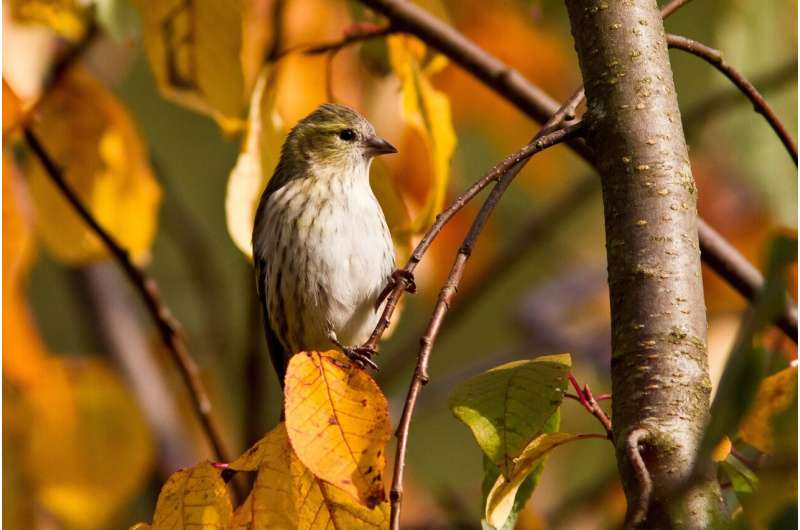This article has been reviewed according to Science X's editorial process and policies. Editors have highlighted the following attributes while ensuring the content's credibility:
fact-checked
peer-reviewed publication
trusted source
proofread
A research team's 'Robin Hood' approach for tracking biodiversity

Elise Zipkin and her team at Michigan State University have developed a sort of "Robin Hood" approach to better understand and protect the world's biodiversity.
They're using information from well-quantified animals to reveal insights about less common, harder-to-observe species. That is, they're taking insights from the data-rich and giving to the data-poor.
Now, they're sharing their methods with the wider research and conservation community in the Journal of Animal Ecology. Additionally, the computer code behind that methodology is freely available on the group's GitHub page.
"We're losing biodiversity so rapidly that we're no longer in a position to ask what's going on with every species individually," said Zipkin, who is an associate professor in the Department of Integrative Biology at MSU. She is also the director of MSU's Ecology, Evolution and Behavior program (EEB).
"At the same time, we have unprecedented amounts of data and computing power," Zipkin said. "We have to think more strategically about how to take advantage of those data to answer the tough questions."
A community approach
Currently, about one in seven species are classified as data deficient by the International Union for Conservation of Nature. That means these species lack the data needed to inform their conservation status, which, in turn, helps determine conservation strategies.
"There are so many species where we don't have the data to tell us exactly what's going on," Zipkin said. "We need more rapid and efficient assessments of those species if we want to figure out how to protect and conserve them."
To that end, Zipkin and her Quantitative Ecology Lab have introduced a framework based on what are known as "integrated community models." In their paper, the researchers show how they design and implement these models to utilize data from the best-characterized species in a community to assess other members of the group.
"We're borrowing strength from the species that have the most information or are most common," Zipkin said. "This allows us to get species-level estimates for all members of a community, and also a comprehensive understanding of what's going on with the community as a whole."
The new publication is the culmination of a multi-year project. In addition to Zipkin, the team included postdoctoral research associate Jeff Doser; graduate students Wendy Leuenberger, Samuel Ayebare and Kayla Davis; and Courtney Davis, who worked on this project as a postdoctoral fellow in Zipkin's group before becoming a research associate at the Cornell Lab of Ornithology.
Zipkin described the new report as a how-to guide for anyone who wants to use the team's methods to draw insights from a variety of different data sources describing multiple species.
In that guide, the team provided three case studies: forest birds in the northeastern United States, butterflies in the Midwest and a simulation scenario for 10 hypothetical species. The results show how integrated community models can be used to estimate species' trends and demographic rates over space and time, even for rarer species.
In publishing this report and the associated computer code, Zipkin said the team's immediate goal is to get these methods into the hands of more researchers. The next step will be working with partners in government and nongovernmental organizations who can use information from the models as they develop conservation strategies.
"We believe this will be a really useful way to enable more effective and efficient conservation planning," Zipkin said. "We can move from a species-by-species approach to working more holistically."
More information: Journal of Animal Ecology (2023). DOI: 10.1111/1365-2656.14012. besjournals.onlinelibrary.wile … 1111/1365-2656.14012
Journal information: Journal of Animal Ecology
Provided by Michigan State University





















